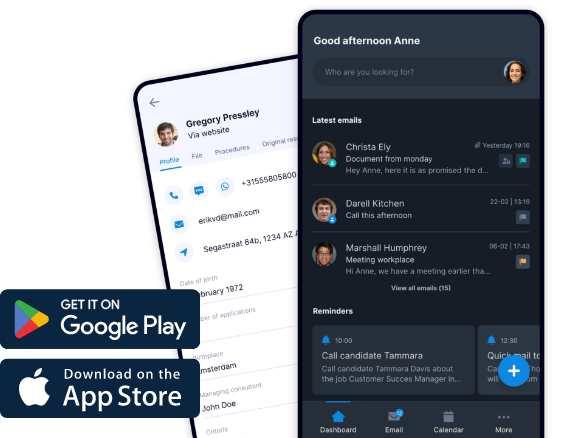How does an ATS work in the recruitment process?

ATS software supports every stage of the recruitment process. It helps to achieve a faster, more efficient and often more effective process. In this blog we tell you more about successfully using an ATS in the recruitment process. To get a grip on the complete process, we have broken down the different recruitment phases.
ATS for sourcing candidates
Finding suitable candidates is one of a recruiter's most important tasks. By using an ATS for sourcing candidates, recruiters can find potential candidates faster and more efficiently to add them to their talent pool. It can also help organize and evaluate these candidates for recruitment in the future.
The system is integrated with various job sites, job boards and social media used by candidates. This allows recruiters to (re)post jobs online quickly and easily. When candidates apply, their data is automatically processed in the ATS system.
Might also be interesting: OTYS Multiposter
ATS for candidate management
When a candidate has responded to one of your jobs, a profile is automatically created. This profile contains all the information entered by the candidate. Any information supplied at a later stage of the process is also automatically incorporated into the profile. During the candidate's recruitment process, information and tags are added to the profile, clearly indicating the candidate's status and qualifications. Even if the candidates prove unsuitable now, they remain in the ATS database, so they can still be placed in the future. The (almost) automatic creation of this talent pool is invaluable to any recruiter.
ATS for candidate selection
After the candidate's profile is created, the system automatically checks all information to determine if the candidate matches certain sets of requirements. The system can easily scan for manually specified skills by the recruiter such as experience, education, certifications.
Based on this information you can then determine whether the candidate may proceed to the screening phase. This example is one of the main reasons why an ATS system removes so much workload and makes recruitment so much more efficient.
Might also be interesting: OTYS Hunt & Select
ATS for managing hiring
Once the desired candidate is chosen, the ATS can easily initiate the next steps. For example, the system can immediately generate templates where the recruiter only needs to check the terms and conditions and press the send button. When the candidate accepts the proposal, this too is automatically processed in the candidate's file.
ATS for onboarding
Once a candidate is hired, the ATS can be used to assign and track the progress of onboarding activities. This can apply to company-wide onboarding or role-specific onboarding activities. Specific tasks and deadlines can be tracked within the ATS to ensure the new employee stays on track.
Studies show that candidates who receive proper onboarding are 69% more likely to stay with a company for three years or more. The ATS supports management of administrative operations.
ATS for optimizing processes
Most ATS offer reporting capabilities that allows recruiters to identify bottlenecks and inefficiencies in their process and workflow. This way you are always shown where there is room for improvement. ATS give recruiters access to a wealth of data to drive (and improve) their hiring decisions and processes.
